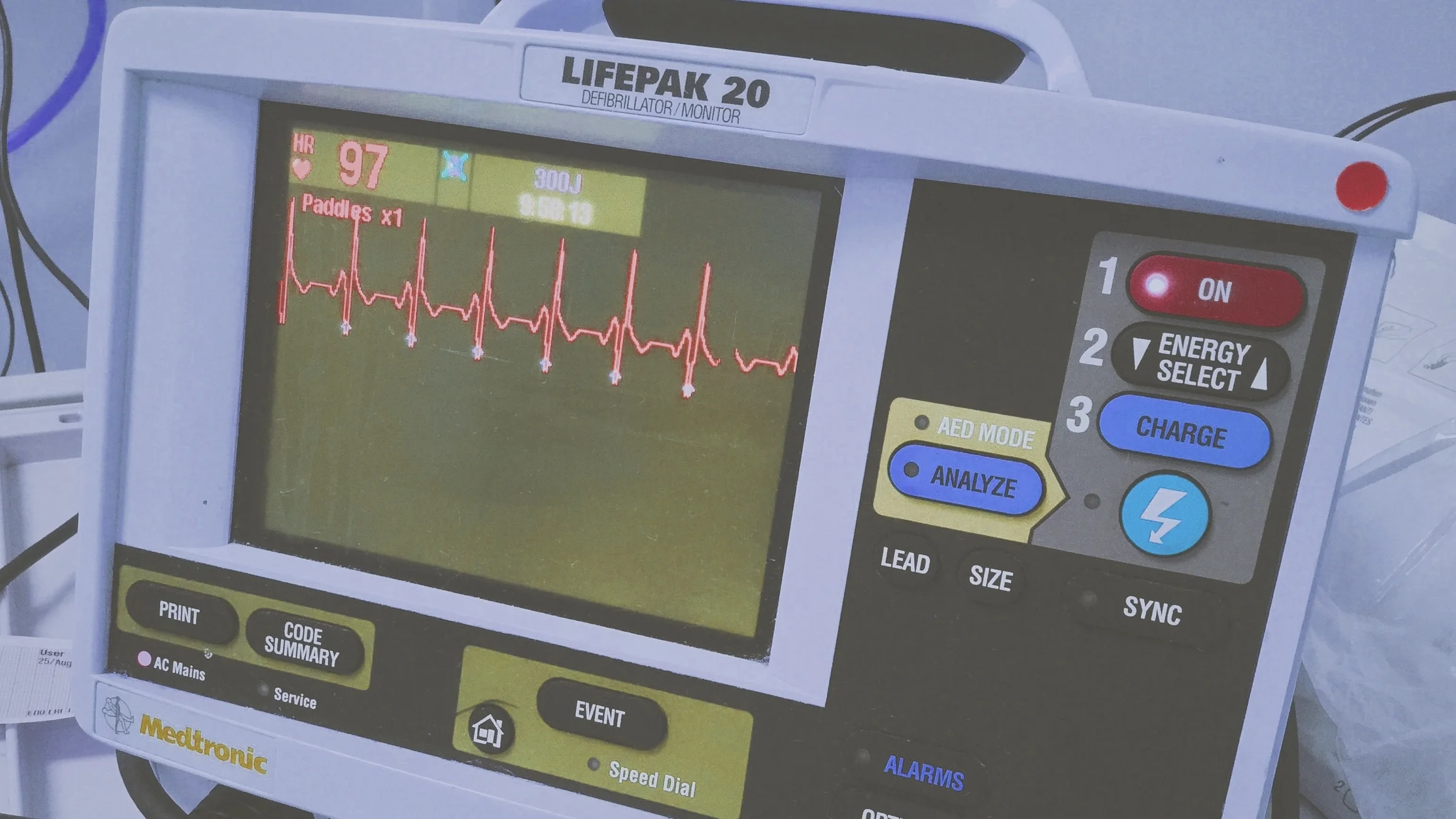#MiniTeach: A 'Pop' In The Chest
“A 59 year old man presents to the department complaining of chest pain radiating to his back.”
"A 59-year-old man presents to the department complaining of chest pain radiating to his back. It began after feeling a ‘pop’ in his chest earlier that day."
He tells you that it feels ‘odd’ in his neck and he has noticed that his neck-chain feels tight. He’s had a recent dry cough. His past medical history includes hypertension, for which he takes ramipril. His voice sounds slightly hoarse and he has prominent external jugular veins.
His observations show: Sats 96%, Pulse 116, BP 162/109, Temp 37.1°C, RR 22
1. As the Nurse/HCA in assessment bay what would you do next?
Calculate the patient’s EWS. (This man scores 2 on heart rate, 1 on systolic blood pressure and 1 for respiratory rate, giving him a total score of 4)
Obtain an ECG.
Get a blood pressure in both arms (as the patient has chest pain radiating through to the back – this can be a symptom of aortic dissection)
This is an unusual presentation and there are some ‘red flags’ that should make you concerned: namely chest pain, neck swelling and voice change. The combination of high EWS and patient’s presentation should prompt you to ensure that the patient is seen by a senior doctor in the assessment bay as soon as possible. This doctor will be able to advise what blood tests should be done.
Obtain large intravenous access (at least a green or preferably a grey).
2. Without looking at the X-Ray what would your differential diagnosis include with this history?
You will probably consider common causes of chest pain, such as pulmonary embolism, ACS, pericarditis and GORD but will feel uncomfortable as the history doesn’t quite ‘fit’. Listen to your nagging doubts and don’t be afraid to throw your diagnostic net out further.
What could cause chest pain, neck swelling and voice change?
Pneumothorax with surgical emphysema
Superior Vena Cava Obstruction
Trauma to the upper chest/neck
Deep neck space infection
Oesophageal rupture (Boerhaave’s syndrome)
Anaphylaxis
3. Have a look at the X-ray and consider the clinical presentation – what is this syndrome called and what are the possible causes?
The X-ray shows that there is a large mass in the superior mediastinum.
The clinical history and X-ray point to a diagnosis of Superior Vena Cava Obstruction.
Causes of SVC Obstruction are legion, but include:
Cancer – bronchial carcinoma, leukaemia, lymphoma, teratoma, thyroid cancer
Lymphadenopathy
Non-malignant tumour – thymoma, lipoma, fibroma, cyst
Retrosternal goitre
Thoracic aortic aneurysm or dissection
Infection – abscess, deep neck space infections
Mediastinitis
Constrictive pericarditis
4. What would your further management be?
This patient is complex and would benefit from being seen promptly by a senior doctor.
A full history and examination should be taken.
Bloods for FBC, U+E, LFT, TFT, G+S.
The investigation of choice in ED would be a contrast CT of the neck and chest. In view of the rapidity of the symptoms, this should be done while the patient is in ED.
As the patient has voice change it would be worth asking ENT to review the patient and perform a nasendoscopy to assess whether he may be at risk of airway obstruction.
As the patient is waiting in ED, he begins to feel unwell and has the sensation of his throat closing up. He feels short of breath and is struggling to swallow. He’s sitting bolt upright as he feels as though he can’t breathe if he tries to lean back or lie down. His voice has become more muffled and he looks very anxious.
5. What are your immediate concerns and how are you going to manage this critical situation?
The patient appears to be developing acute airway obstruction.
Move the patient to the Emergency Room (ER) and obtain senior help.
Apply 15l/min of oxygen via a non-rebreathe mask.
Allow the patient to adopt the position he is most comfortable in.
Re-assess ABC.
Obtain senior anaesthetic and ENT help stat to assess and secure the patient’s airway.
Ensure that Bag-Valve-Mask, difficult and surgical airway equipment is next to the patient’s trolley in case he deteriorates further. (This is currently kept on the difficult airway trolley in the ER, but will soon be kept in intubation trolleys in every ER bay).
So, what was the underlying diagnosis in this patient?
When this gentleman came to ED, he had a CT chest done, which showed a large superior mediastinal mass which was displacing and compressing his trachea and oesophagus. The underlying cause was initially unclear, but it was thought that the mass was cystic in nature.
Unfortunately, this patient was discharged home late at night from ED with plans for him to be followed up by cardiothoracics.
He came back to ED via 999 ambulance in the early hours of the morning in extremis (as per question 5). He became cyanosed and unconscious in the ER, but was successfully intubated and taken to ITU. He was initially thought to have a retrophaygeal and mediastinal abscess and underwent VATS drainage.
Histology subsequently showed that the lesion was a cyst. He was discharged home having made an excellent recovery one month later.








